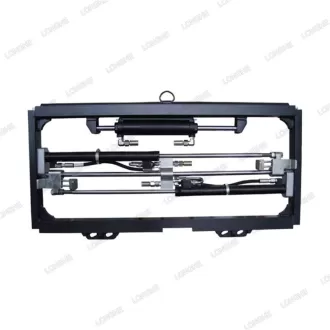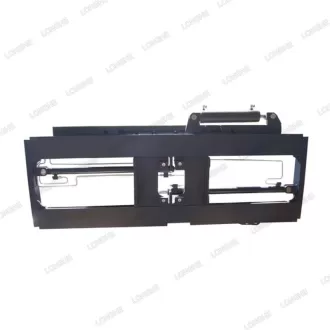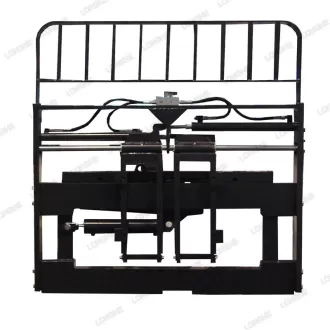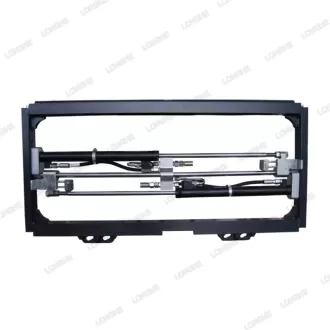Fork positioners are crucial attachments in the material handling industry, transforming the capabilities of forklifts and enhancing operational efficiency. These devices are designed to adjust the width between a forklift's forks, allowing for seamless handling of various load sizes and types. As we explore the benefits of fork positioners, it becomes evident why these attachments have become indispensable in modern warehouse and logistics operations.
1. Versatility in Load Handling
One of the primary advantages of fork positioners is the enhanced versatility they bring to load handling. Traditional forklifts often require manual adjustment of forks to accommodate different load sizes, a time-consuming process that can hamper efficiency. Fork positioners automate this adjustment, enabling operators to handle a diverse range of loads quickly and efficiently. This versatility is particularly valuable in dynamic warehouse environments where the nature of loads varies constantly.
2. Time and Labor Savings
Time is money in the world of material handling, and fork positioners contribute significantly to time savings. With the ability to adjust fork widths without the need for manual intervention, operators can perform tasks more swiftly. The automation of this process not only reduces the time spent on load adjustments but also minimizes the need for additional labor to handle such tasks. This efficiency translates into a more productive and cost-effective material handling operation.
3. Increased Productivity
Fork positioners play a pivotal role in boosting overall productivity within a warehouse or distribution center. By streamlining load-handling processes and eliminating the need for frequent equipment adjustments, forklift operators can focus on their core tasks more effectively. This increased productivity is especially valuable in high-throughput environments where swift and precise material handling is essential to meet operational demands.
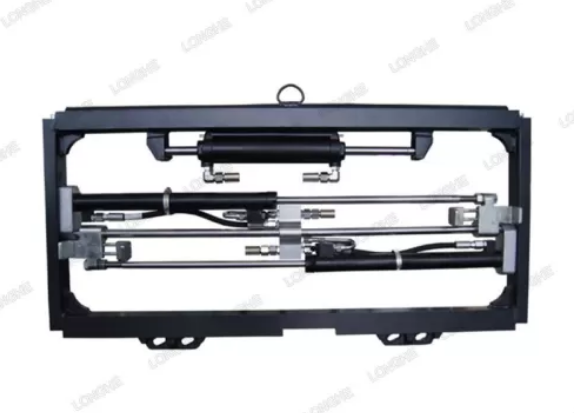
Fork Positioner Sideshifting M Series
4. Enhanced Safety
Safety is a paramount concern in any material handling operation, and fork positioners contribute to creating a safer work environment. The automation of fork adjustments reduces the need for operators to manually handle loads or make frequent adjustments, minimizing the risk of accidents and injuries. Additionally, precise fork positioning ensures that loads are handled securely, reducing the likelihood of damage to goods or equipment.
5. Optimized Load Centering
Fork positioners facilitate precise load centering, a critical factor in maintaining stability during material handling operations. Improperly centered loads can lead to forklift instability, increasing the risk of accidents and load damage. Fork positioners eliminate the guesswork by allowing operators to accurately position the forks for optimal load balance, ensuring safe and secure handling even with uneven or asymmetrical loads.
6. Adaptability to Different Industries
The benefits of fork positioners extend across various industries, making them adaptable to different material handling scenarios. Whether in manufacturing, distribution, or logistics, the ability to quickly and accurately adjust fork positions makes these attachments valuable assets. Fork positioners can accommodate the diverse needs of industries dealing with a wide range of load sizes, shapes, and materials.
7. Reduced Equipment Wear and Tear
Manual adjustments of forklift forks can contribute to increased wear and tear on equipment over time. Fork positioners, with their automated and precise adjustments, help minimize unnecessary stress on forklift components. This reduction in wear and tear not only extends the lifespan of the equipment but also reduces maintenance costs, contributing to long-term cost savings for businesses.
FAQs: Fork Positioner Attachments
Q: How does a fork positioner enhance forklift performance?
By automating fork adjustments, fork positioners enable precise load handling, optimizing efficiency and reducing the need for manual repositioning.
Q: Are fork positioner attachments compatible with all forklift models?
Compatibility varies, and it's crucial to choose a fork positioner that aligns with the specifications of your specific forklift model for seamless integration.
Q: Can fork positioners handle irregularly shaped loads?
Yes, fork positioners are designed to accommodate various load shapes, providing flexibility in material handling, including irregularly shaped or asymmetrical loads.
Q: What maintenance is required for fork positioner attachments?
Regular inspections and lubrication are essential for optimal performance. Following the manufacturer's maintenance guidelines ensures longevity and reliability.
Q: How do fork positioners contribute to workplace safety?
Fork positioners enhance safety by minimizing manual adjustments, reducing the risk of accidents, and promoting operator comfort through ergonomic load handling.
Conclusion
In summary, the benefits of fork positioners are multifaceted, ranging from increased versatility and productivity to enhanced safety and reduced equipment wear. As material handling operations continue to evolve, the adoption of fork positioners has become a strategic investment for businesses seeking to optimize their efficiency and maintain a competitive edge in the dynamic world of logistics and warehousing.




